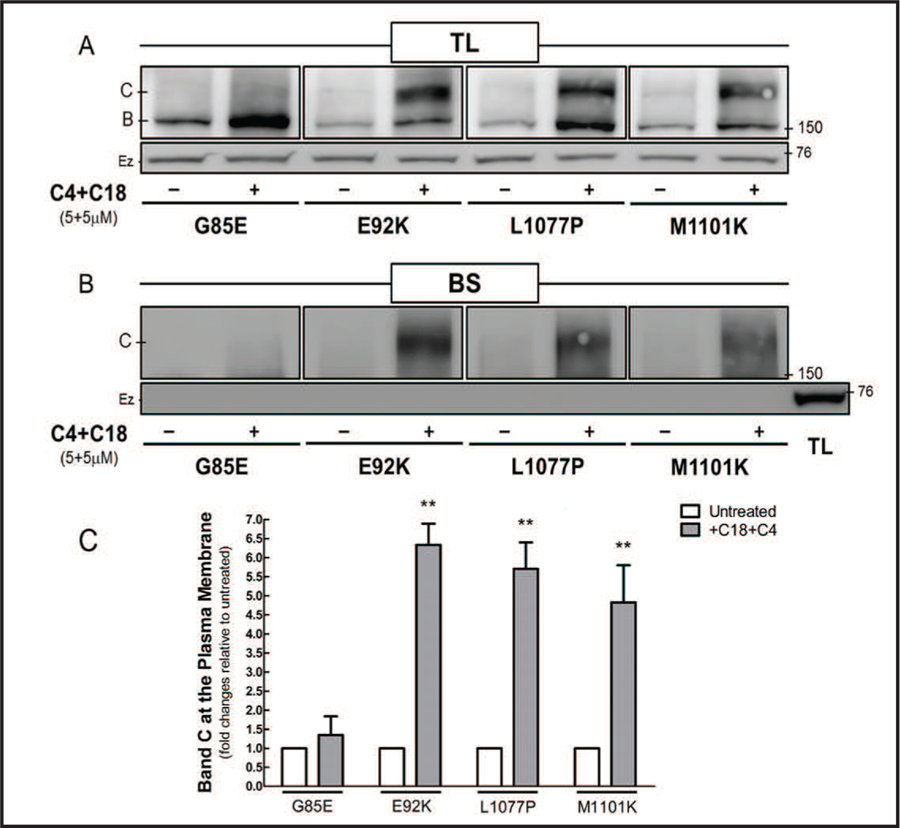Fig. 3.
Co-administration of C4 and C18 restores the expression of the mature form of CFTR mutants at the cell surface. Cos-7 cells transfected with 4 µg of CFTR constructs bearing G85E, E92K, L1077P, or M1101K for 32 h were treated with C4 and C18 (each 5 µM) for additional 16 h. Immunoblots show the effect of C4 and C18 on CFTR mutants in (A) the total protein lysate (TL) and (B) biotinylation of cell-surface proteins (BS). (C) The mature form (band C) of the CFTR mutants at the cell surface was quantified in untreated and treated samples (Student’s t test, n = 4). Data are normalized to control (untreated samples) values; vs. control: **P < 0.01. Ezrin (Ez), an intracellular protein, was used as a loading control. The lack of ezrin binding to biotin is evidence that the plasma membrane was intact and biotin did not leak into the cells. Membranes were cut into two strips and incubated with primary antibodies against CFTR or ezrin.

